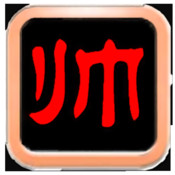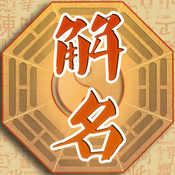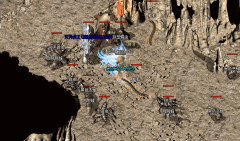屏幕截图
棋,是中國傳統的二人對弈棋類遊戲。其他類似的有朝鮮象棋及日本將棋。为与國際象棋(西洋棋)等區別,又稱中國象棋,主要流行于華人及越南人社区。是首届世界智力运-
动会正式比赛項目。
象棋的棋盤由九條直線和十條橫線相交而成。棋子放在各條線的相交點上,並在線上移動。棋盤中間的一行沒有畫上直線,稱為「河界」,通常標上楚河漢界字樣,源自-
楚漢相爭時的鴻溝,或標上「觀棋不語真君子,起手無回大丈夫」等字樣。
現行的中式記錄方法是:九條直線,紅方從右到左用漢字「一」至「九」表示,黑方在自己的那一面從右到左用數字「1」至「9」表示。也就是說,紅方的直線「一」-
就是黑方的直線「9」,以此類推。第四條直線(或第 6 條直線)和第六條直線(或第 4 條直線)稱為「兩肋」、「兩肋線」,簡稱「肋」。棋盤上,劃有斜交叉線而構成「米」字形方格的地方,雙方各有一塊,稱為「九宮格」,簡稱「九宮」,是將/帥和士/仕活-
動的區域。
棋子的顏色分紅和黑或(蓝、绿),雙方各有 16 隻棋子:
分別是一隻將(帥)、二隻士(仕)、二隻象(相)、二隻車(俥)、二隻馬(傌)、二隻砲(炮)、五隻卒(兵)。
==================================================
Xiangqi (Chinese: 象棋; pinyin: Xiàngqí) is a two-player Chinese board game in the same family as Western chess, chaturanga, shogi, Indian chess and janggi. The present-day form of Xiangqi originated in China and is therefore commonly called Chinese chess in English.
The game represents a battle between two armies, with the object of capturing the enemy's "general" piece. Xiangqi is one of the most popular board games in China. Distinctive features of Xiangqi include the unique movement of the pao ("cannon") piece, a rule prohibiting the generals (similar to chess kings) from facing each other directly, and the river and palace board features, which restrict the movement of some pieces.
Besides China and areas with significant ethnic Chinese communities, Xiangqi is also a popular pastime in Vietnam.
Its Chinese name can be treated as meaning "Image Game" or "Elephant Game":
象 means primarily "elephant" and is derived from a stylized drawing of an elephant; it also means "image", as a jiajie (re-use for another word which was pronounced the same).
棋 means "game".
Xiangqi contains features which are not in Indian chess: the river, the palace, and putting the pieces on the corners of the squares. These features may have come from an earlier Chinese board game (perhaps a war-type game) which was also called 象棋 (Xiangqi). As in an astronomical context 象 sometimes means "constellation" (i.e. a figure made of stars), there were early Chinese theorizings (which Harold James Ruthven Murray followed and believed) that the older Xiangqi simulated the movements of stars and other celestial objects in the sky.
动会正式比赛項目。
象棋的棋盤由九條直線和十條橫線相交而成。棋子放在各條線的相交點上,並在線上移動。棋盤中間的一行沒有畫上直線,稱為「河界」,通常標上楚河漢界字樣,源自-
楚漢相爭時的鴻溝,或標上「觀棋不語真君子,起手無回大丈夫」等字樣。
現行的中式記錄方法是:九條直線,紅方從右到左用漢字「一」至「九」表示,黑方在自己的那一面從右到左用數字「1」至「9」表示。也就是說,紅方的直線「一」-
就是黑方的直線「9」,以此類推。第四條直線(或第 6 條直線)和第六條直線(或第 4 條直線)稱為「兩肋」、「兩肋線」,簡稱「肋」。棋盤上,劃有斜交叉線而構成「米」字形方格的地方,雙方各有一塊,稱為「九宮格」,簡稱「九宮」,是將/帥和士/仕活-
動的區域。
棋子的顏色分紅和黑或(蓝、绿),雙方各有 16 隻棋子:
分別是一隻將(帥)、二隻士(仕)、二隻象(相)、二隻車(俥)、二隻馬(傌)、二隻砲(炮)、五隻卒(兵)。
==================================================
Xiangqi (Chinese: 象棋; pinyin: Xiàngqí) is a two-player Chinese board game in the same family as Western chess, chaturanga, shogi, Indian chess and janggi. The present-day form of Xiangqi originated in China and is therefore commonly called Chinese chess in English.
The game represents a battle between two armies, with the object of capturing the enemy's "general" piece. Xiangqi is one of the most popular board games in China. Distinctive features of Xiangqi include the unique movement of the pao ("cannon") piece, a rule prohibiting the generals (similar to chess kings) from facing each other directly, and the river and palace board features, which restrict the movement of some pieces.
Besides China and areas with significant ethnic Chinese communities, Xiangqi is also a popular pastime in Vietnam.
Its Chinese name can be treated as meaning "Image Game" or "Elephant Game":
象 means primarily "elephant" and is derived from a stylized drawing of an elephant; it also means "image", as a jiajie (re-use for another word which was pronounced the same).
棋 means "game".
Xiangqi contains features which are not in Indian chess: the river, the palace, and putting the pieces on the corners of the squares. These features may have come from an earlier Chinese board game (perhaps a war-type game) which was also called 象棋 (Xiangqi). As in an astronomical context 象 sometimes means "constellation" (i.e. a figure made of stars), there were early Chinese theorizings (which Harold James Ruthven Murray followed and believed) that the older Xiangqi simulated the movements of stars and other celestial objects in the sky.
用户表态
同类推荐:
 停车场大屠杀
停车场大屠杀类别:街机
大小:32.35M
评分: F1 2011 GAME
F1 2011 GAME类别:赛车
大小:190.00M
评分: 篮球世界杯
篮球世界杯类别:体育
大小:9.10M
评分: 比萨大师
比萨大师类别:小游戏
大小:12.90M
评分: 水晶消除
水晶消除类别:小游戏
大小:7.50M
评分:
最新资讯
- 如何在3000sf发布网里面找到传奇游戏!
- 超变传奇sf在2018年除了是一款特别知名的游戏
- 道士在变态传奇中的职业配置中尤其关键
- 石墓阵地图能爆出什么装备?
- 三国传奇游戏开通赞助方法
- 猎魔传奇攻速法宝详细介绍
- 东汉传奇通天塔副本介绍
- 新开传奇再现经典的传奇游戏
- 新开传奇曾经的那些极品的装备
壁纸主题












 火龙boss周边出现的火圈并不是由
火龙boss周边出现的火圈并不是由 邪恶钳虫是一种物理防御力极强的
邪恶钳虫是一种物理防御力极强的 东方美女壁纸
东方美女壁纸 超清纯美女
超清纯美女 刘雨欣写真
刘雨欣写真 日本后
日本后